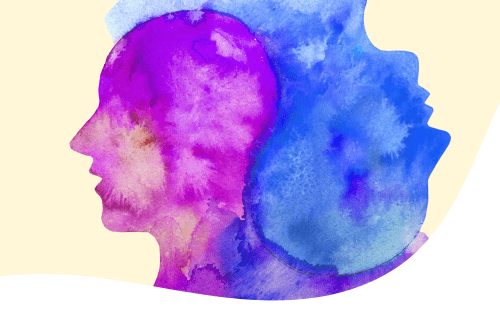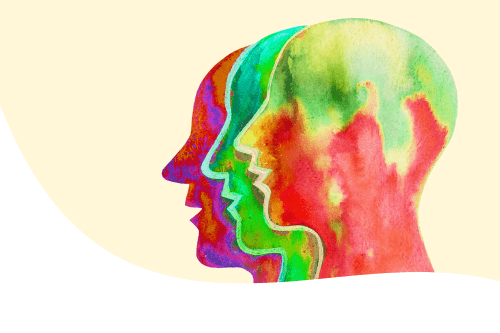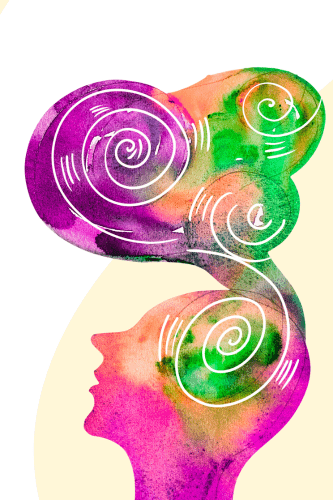
This article was featured in our 2024 Fall edition of Montessori Life magazine. Read the full issue online (AMS members only).
AMS members also receive a print subscription to Montessori Life magazine. Become a member today to receive your own subscription plus access to the complete digital archives.
As every Montessorian knows, Dr. Montessori’s pedagogy evolved through her work with “phrenasthenic,” or disabled and neurodivergent, children in Rome (Trabalzini, 2011). This historical knowledge may lead to the assumption that Montessori education epitomizes inclusive education—that Montessori is indeed education for all children, both neurotypical and neurodivergent. However, this assumption, while logical, needs to be examined, as there are three things that can influence teachers’ practice without their awareness:
In this article, we scrutinize these three areas of influence to help us illuminate our approaches to our practice, including biases we are unaware of—because, as Dr. Montessori stated, “The real preparation of education is the study of one’s self” (Montessori, 1967, p. 132). Additionally, we discuss alternatives to the pathology paradigm and the information processing model of cognition—namely, the neurodiversity paradigm (Walker, 2021) and an enactive model of cognition (Varela et al., 2016)—to help move Montessori education in current practice toward true inclusion.

Humans make sense of the world through categorization. Infants can categorize colors and animals often before they can crawl (Poulin-Dubois & Pauen, 2017), preschoolers can divide people groups by gender and race (Aboud & Spears Brown, 2013), and older children use categorization to strategically organize knowledge (Pressley & Hilden, 2006). Societal views mirror this tendency—we may identify ourselves or others as conservative or liberal, healthy or unhealthy, citizen or immigrant. The pathology paradigm—the way most people view ability or disability—further engages in this categorization by dividing bodies and minds into typical and atypical groups (Walker, 2021).
The pathology paradigm is rooted in the medical community and assumes most people can be categorized as “typical”: Their neurology, physiology, and behaviors fit a particular category considered to be “normal.” In this paradigm, a much smaller percentage of people would then be categorized as “atypical,” as their neurology, physiology, and behavior differ from the norm.
Walker (2021) presented three tenets of the pathology paradigm. First, this paradigm assumes there is one correct kind of body and mind. Second, this paradigm pathologizes difference, positioning any deviation from the one correct way as a problem within the individual. Third, the paradigm holds that the problem should be fixed to make the individual appear, behave, and function along standards of normality.
The pathology paradigm underlies our social systems. For instance, building and furniture design often center access and utility for a perceived “normal” body (Boys, 2022). The design of doors, scissors, and even desks often assume right-handedness, the presumed “typical” body. Stairs at building entrances, chairs with fixed armrests, and even the height placement of shelves and cabinets all can center a perceived “normal” user. Adaptations and accommodations, such as ramps, signs, handrails, and flexible seating options for “abnormal” bodies, are made later. This retrofitting signals how the building of physical structures prioritizes societally accepted bodies.
Similarly, educational systems have been built around the perception of typical bodies and minds. In conventional schools, students move through graded groups based on age and ability standards. Those who meet typical standards receive “general” education, whereas those with atypical bodies and minds merit a “special education.” Students deemed atypical receive treatment or remediation to help them “compensate” for deficits, with the goal of eventually assimilating to general education environments (Parekh, 2023). This happens in teacher training as well, with programs reinforcing the notion of a typical learner through segregated general and special education tracks (Pugach et al., 2011). The result is that education centers the production of a “normal child” (Waltz, 2020).
Montessori programs counter common educational norms in several ways, including flexible pacing, student-centered environments, and individualized choice for learning. Therefore, it can be easy to assume that the Montessori model avoids the trap of the pathology paradigm. However, as with other independent and school-of-choice institutions, many Montessori programs engage in “counseling out”: Students are deemed a “poor fit” for the program, signaling the program is built around an assumed right way of being (Weber, 2007). In addition, my (Laura’s) own experience as head of a Montessori school and my subsequent research examining Montessori Elementary teachers’ views of normalization suggest that even Montessori educators are susceptible to viewing what they perceive as non-normalized behaviors through the pathology paradigm.
How Montessori Elementary teachers conceptualize normalization in practice became an area of research interest for me (Laura) when, after only 3 weeks into a school year many years ago, a newly hired teacher fresh out of Montessori training asked me, the head of school, and the director of education to remove 8 children from her Lower Elementary classroom because they were “not normalized.” Half of these children had transitioned from the director of education’s Early Childhood classroom, where they had displayed “normalized” behaviors, particularly during their last year. The other 4 were students new to Montessori. Having a teacher ask administration to remove 8 children from her classroom was a startling and puzzling situation. This teacher, who had graduated from a well-reputed training center and had demonstrated pedagogical understanding during her interviews, was now declaring her unwillingness to persist with children who did not appear “normalized.” She seemed to assume that, as a Montessori teacher, she would only work with children who were entirely self-regulated and eager to thoroughly engage in her lessons and their work. Children who didn’t demonstrate such normative behavior appeared to be a problem—and clearly not her problem. While this example may seem extreme, it clearly illustrates how even Montessori teachers can pathologize student behavior. This example parallels research done in conventional schools that finds teachers may report positive beliefs about inclusive education but are reluctant to have students with disabilities in their own classrooms (Hwang & Evans, 2011). The notion of typicality, evident in both Montessori and conventional settings, influences teacher practice.
Years later, because of this experience, I did a research study examining Montessori Elementary teachers’ perceptions of normalization. Results showed that Montessori teachers have differing conceptualizations of normalization based on their personal preferences. As one study participant stated:
Sometimes you have to wonder if it’s kind of subjective, too, in the sense that what I might feel is normalized might be just what I’m comfortable with. A child could be busy at work and completely engaged in something and focused on learning but might be acting in a way that I would be uncomfortable with happening in the classroom. I don’t know, sometimes I wonder how much that comes into play. What we might be comfortable with is silence. (Shaw, 2017, p. 107)
We want to clarify that teachers’ comfort with and preference for silence may be due to their own neurology. If a teacher is autistic, for example, lots of classroom chatter may feel overwhelming; thus, the teacher may either intentionally or unwittingly be strongly encouraging their students to be silent as they work (and, yes, we are aware that, according to Dr. Montessori, an Elementary classroom is not supposed to be silent!).
On the other hand, a teacher’s preference for silence may be due to norms learned in training and/or the larger culture. For instance, the notion of inhibition has long been thought to be “intrinsic to achieving order in physical, or indeed in mental, systems” (Smith, 1992, p. 237). Inhibition, in the Montessori classroom example, may look like students silently working. Overall, when students demonstrate behaviors outside our preferred norms—whether due to our own neurology or our training and/or culture—we may be quick to pathologize those behaviors. Thus, we need to take time to ask ourselves: Am I interpreting my students’ behaviors through the pathology paradigm under the guise of normalization?

Despite the pathology paradigm’s pervasive reach, research continues to upend the typical-atypical fallacy. For instance, studies on dyslexic individuals’ cognitive behavior show high levels of within-group heterogeneity (Zoubrinetzky et al., 2014). Put another way, dyslexic brains function very differently from one another, just as they differ from non-dyslexic brains. Research regarding autistic communication, which is often thought to be impaired, has shown that deficits in communication primarily occur between autistic and non-autistic individuals, suggesting the communication problem is situated in both populations (Milton et al., 2022). Titled the “double empathy” problem, the burden is often placed on autistic individuals to empathize and change their behavior for non-autistic individuals, rather than mutual understanding and adaptation toward effective communication. Moreover, a recent analysis of primary constructs used to classify and diagnose mental disorders established that many symptoms were missing, miscategorized, or misgrouped when compared to the DSM-5’s current diagnostic criteria. This finding first highlights that diagnostic categories—ADHD, autism, anxiety, depression, etc.—were created by the medical field seeking to define normal and abnormal behavior. Second, this revelation suggests that those determined bounds of normality do not necessarily match individual lived experience, further prompting the need for reexamination of perspectives on normality (Forbes et al., 2023).
In place of the pathology paradigm—the collective categorization of typical and atypical—we prefer the neurodiversity paradigm. The term neurodiversity, which autistic activists collectively coined in the mid-1990s (Botha et al., 2024), refers to the natural biological diversity of bodies and minds (Walker, 2021). Any difference in functioning reflects biological diversity rather than an individual problem or deviation (Chapman, 2021). The neurodiversity paradigm asserts that neurotypicality—the idea of a typical brain and body—represents a social construct, since there are no “typical” brains or bodies. There is only diversity. Those who fall outside of that socially constructed norm fall under the identity group “neurodivergent,” wherein their way of neurocognitive functioning diverges from the socially constructed normal. Autistic individuals as well as individuals with ADHD, dyslexia, and other learning disabilities often identify with this group.
The neurodiversity paradigm recognizes the burden of the pathology paradigm’s rule in education, and many neurodivergent adults are speaking out about the negative impact of needing to mask their neurodivergence, perform neuronormativity (behave in ways similar to socially constructed norms), and comply with the dominant system (Walker, 2021). Montessori classrooms can offer space to neurodivergent students as Dr. Montessori intended, but teachers will need to examine their own beliefs around normalization to create neurodiversity-affirming environments.
In addition to the pathology paradigm, there has been a dominant model of cognition since the 1950s that has likely influenced our understanding and interpretation of student behavior: the computational model, also known as the information processing model of cognition. This model assumes that 1) what we perceive in the world is input, and how we act in response is the output; 2) information processing occurs in between that input and output, as performed by a computer, but in our brains; and 3) this information is processed in a serial manner: We first see things, then think about those things, then decide what to do about those things, and then, finally, we act (Anderson, 2014; Cisek & Kalaska, 2010; Pezzulo & Cisek, 2016). As we process information, this model also assumes we are forming mental representations or full reconstructions of the world within our heads. Within the research literature on embodied cognition, which is “the idea that the mind must be understood in the context of its relationship to a physical body that interacts with the world” (Wilson, 2002, p. 625), this concept of mental representations is hotly debated. The reason it is hotly debated is because the reconstructed representations are assumed to only occur in the brain, making cognition abstract and isolated from the rest of the body and the environment (Gallagher, 2015; 2017).
The ideas of information processing and mental representations might make sense to many educators because education literature focuses on the prefrontal cortex. (Google prefrontal cortex in education and see how many results show up!) We assume the prefrontal cortex helps us to think before we act, so it would make sense that the brain is reconstructing the world so we can perform the steps of see-think-decide-act. This focus on the prefrontal cortex, however, is actually due to a bias in the research literature—a bias that Stanford neurologist Josef Parvizi calls corticocentric myopia, wherein the “cortical and subcortical structures have traditionally been considered two dichotomous sets of structures ordered in a hierarchical relationship in which the cerebral cortex, such as the frontal lobe, dominates over the subcortical structures” (Parvizi, 2009, p. 357). This means that researchers, even in neuroscience, have a bias that the prefrontal cortex is telling the rest of the brain what to do. This bias then manifests in our language when we refer to the prefrontal cortex as the “central executive” or “air traffic controller,” as Miller and Cohen did in their 2001 seminal paper.
What the actual neuroscience data shows, however, is that the prefrontal cortex is not telling the rest of the brain what to do. Instead, behaviors are selected through parallel processes distributed throughout the brain; the prefrontal cortex is just one part of the brain that determines action (Pessoa, 2014). This also means, according to the research data, that there is no one-to-one mapping between a particular brain area and a specific function (Anderson, 2014). Rather, “brain regions participate in many functions,” and “many functions are carried out by many regions” (Pessoa, 2014, p. 401). Thus, how could one brain area dominate over the others?
The other issue found in the neuroscience data is that the assumed see-think-decide-act process in the information processing model of cognition is actually a very slow process. If we had to see-think-decide-act for every move we made, we wouldn’t have survived as a species; we wouldn’t have been able to move away from the tiger fast enough to avoid death (Cisek, 2021, 2022)! Thus, to survive, humans had to develop the ability to act without conscious intentional control.
It should be noted, however, that though the see-think-decide-act model of cognition isn’t supported by the neuroscience data and has other issues as discussed, individually we may still believe we first see something, then think about it, and then decide if and how to act on it. We humans make plans all the time and then act based on those plans. Yet, that doesn’t mean that what’s happening in our brains when we do this is a linear process; rather, it’s a parallel and distributed process across the brain. Additionally, most of our behavior is not planned or consciously chosen—it occurs within the moment. But if we have a bias toward believing that most behaviors are consciously chosen, that assumption can lead us to misinterpret our students’ behaviors—particularly neurodivergent students, who have greater difficulty conforming to neuronormative standards of behavior.
If you’re a classroom teacher, think about your own environment: When you’re giving lessons and observing students, you are also interpreting your students’ behaviors. Given the dominance of the information processing model, it is likely that your understanding of behavior is based on this see-think-decide-act model. Anecdotally, in my (Laura’s) experience as head of a Montessori school, it was not uncommon for teachers to say, “The children know the rules and processes of the classroom, they’re just not following them.” Or, “She knows what to do, she’s just choosing not to do it!” If all behavior was predicated on the see-think-decide-act model, these statements would make sense. The assumption here is that students are always acting out of conscious, intentional control and thought because they know and are choosing their behaviors. However, while some of our behaviors are based on conscious, intentional control, like when we make plans to be somewhere and we show up on time, most of our behaviors are based on habits—habits of interaction with the environment and other people (Poldrack, 2022; Wood, 2019).
For instance, imagine that every year when you go home to visit your family for the holidays, you fight with your sister. Every year you make a promise to yourself: “I’m not going to fight with her this year.” But then you arrive at your parents’ house, the house you grew up in. You see your parents, and in walks your sister—and what do you do? You pick a fight with her. In that moment, fighting likely doesn’t feel like a conscious, intentional choice. Instead, it likely feels automatic, like a habit, because it is. It is a habit of interaction you and your sister developed growing up in that house. What’s interesting, though, is that if your sister moved to your town and you spent time with her to work on your relationship, you might stop fighting with her. But when you return home for the holidays, your new habit of interaction might not be strong enough to withstand the long-embedded environmental cues, and so you fight with her again. Context affects our habits, and breaking habits requires a lot of conscious, intentional control—even more control when you’re in the environment where an initial habit was first learned (Poldrack, 2022; Wood, 2019). The high level of control and effort necessary to change a habitual behavior is exhausting.
The habits we form are also, obviously, influenced by our neurology. For instance, cognitive scientist Elizabeth Torres at Rutgers University has investigated the sensorimotor systems of autistic children, autistic/ADHD (also known as AuDHD) children, and adults with schizophrenia (Brincker & Torres, 2017; Nguyen et al., 2016; Torres & Denisova, 2016). She found that all these populations have what she refers to as “noisy” micro-movements—movements not seen with the naked eye that provide more feedback to the individual than is typically experienced among those deemed neurotypical. Thus, those who are neurodivergent experience a noisy reafference signal that overloads their sensorimotor systems. To understand what’s happening, imagine that someone is talking to you, and as they talk, they’re gesturing. All that sensory information—their talking and gesturing along with everything else that’s going on around you—is entering into your brain via afferent pathways, which take sensory information into the brain. Now, the brain decides what to do in response to that information through a parallel and distributed process (not the see-think-decide-act process), but because your own movements are noisy, a reafference signal is generated that gets added to all the outside stimuli. So, now your brain is overloaded because it’s taking in too much noise—noise from the outside stimuli and noise from your own movements. You are literally distracted by the noise of your own movements, which makes you feel sensorially flooded or overwhelmed (Torres, 2018; Von Holst & Mittelstaedt, 1950). To regulate yourself in that moment, you may fidget and avoid eye contact, but those actions aren’t intentional. You aren’t consciously thinking and deciding to fidget or avoid eye contact, and it’s likely you’re not even aware you’re doing those things. Instead, those behaviors are automatic, and if they helped you regulate yourself in the past, they will become habitual.
Every person experiences the world in their own way, whether they are labeled as neurodivergent or neurotypical, and we can’t even begin to understand someone’s experience if we always assume they are consciously choosing their actions. In fact, we may misinterpret their behaviors. A student’s lack of eye contact may be mistakenly interpreted as choosing to not pay attention or even outright defiance if the teacher is trying to force the student to make eye contact with them. Yet, that student, whether autistic or just highly anxious in that moment may only be trying to regulate their own experience of the world. Within the pathology paradigm, such behavior is “deviant” and needs to be fixed. A neurodiversity perspective, however, allows for more curiosity into the underpinnings of behavior and cognition. Fortunately, there is a more embodied model of cognition that not only recognizes that most behaviors are habitual but also that humanity is neurodiverse.

The enactive model of cognition (enactivism) fully rejects the information processing model and its notion of mental representations. Influenced by phenomenology (Merleau-Ponty, 2012) and American pragmatism (Dewey, 1896), enactivism instead views cognition as a dynamic relationship between mind, body, and environment, wherein “cognition consists not of representations but of embodied action” (Varela, 1999, p. 17). This approach recognizes that actions “spring from an immediate coping with what is confronting us” in any given moment and context (Varela, 1999, p. 5). However, the world is not assumed to be an objective thing, out there separate from us. Rather, in viewing “cognition as enaction,” each person “bring[s] forth [a world] by concrete handling” (Varela, 1999, p. 8, original emphasis). As Varela, Thompson, and Rosch (2016) stated in their groundbreaking book The Embodied Mind (originally published in 1991):
Even the most hard-nosed biologist, however, would have to admit that there are many ways that the world is—indeed even many different worlds of experience—depending on the structure of the being involved and the kinds of distinctions it is able to make. And even if we restrict our attention to human cognition, there are many various ways the world can be taken to be. This nonobjectivist (and at best also nonsubjectivist) conviction is slowly growing in the study of cognition. …We propose as a name the term enactive to emphasize the growing conviction that cognition is not the representation of a pregiven world by a pregiven mind but is rather the enactment of a world and a mind on the basis of a history of the variety of actions that a being in the world performs. (p. 8)
Each person, with their own unique neurology and body and habits of interaction developed over the course of their life, brings forth their own world as they interact with their current context. This is why children in the same family can have very different experiences and different responses to situations—the same goes for students within the same classroom. Our job as educators must be to try to understand our students’ varied worlds and habits.
As Walker (2021) stated:
In the classroom, students must be free to be neurodivergent, to act neurodivergent, to look and sound neurodivergent. Each student must be free to openly engage in whatever forms and styles of embodiment and movement come naturally to them, or meet their (physical, cognitive, and/or emotional) needs. (p. 146)
In this quote, she was referring to higher education classrooms. But how can we ensure this in our Montessori classrooms, as our students do the work of constructing their selves?
First, we must engage in the critical self-reflection that Dr. Montessori asked us to do (as we noted earlier): “The real preparation of education is the study of one’s self” (Montessori, 1967, p. 132). Thus, we must reflect on our own neurocognitive functioning and how that might affect our expectations of our students and our interpretations of their behavior.
Additionally, we should reflect on how we define “normal.” How do we conceptualize normalization? What student behaviors do we prefer, and why do we prefer them? How might we be unwittingly projecting our own preferences onto our students? Are we observing our students without labeling those behaviors as good or bad? Are we looking for patterns of behavior? Are we talking to our students to better understand what they’re experiencing? Are we helping children to understand their bodies, their minds, and their own habits? As Montessorians, we respect all children and want to prepare environments that allow them to construct their true selves so they all may flourish and become contributing members of society. Doing that, however, requires more than understanding of Montessori pedagogy; it also requires examination of beliefs and biases that may be rooted in outdated paradigms. The enactive model of cognition and the neurodiversity paradigm can help us to reflect on our own beliefs and biases so we may truly create classrooms that are inclusive of all children.
References
https://doi.org/10.1146/annurev.neuro.24.1.167
http://dx.doi.org/10.1016/j.tics.2009.04.008
https://doi.org/10.1016/j.plrev.2014.03.005
https://doi.org/10.1080/21642850.2019.1684920
https://doi.org/10.1016/B978-0-12-804082-9.00001-0
https://doi.org/10.4324/9780429322297


